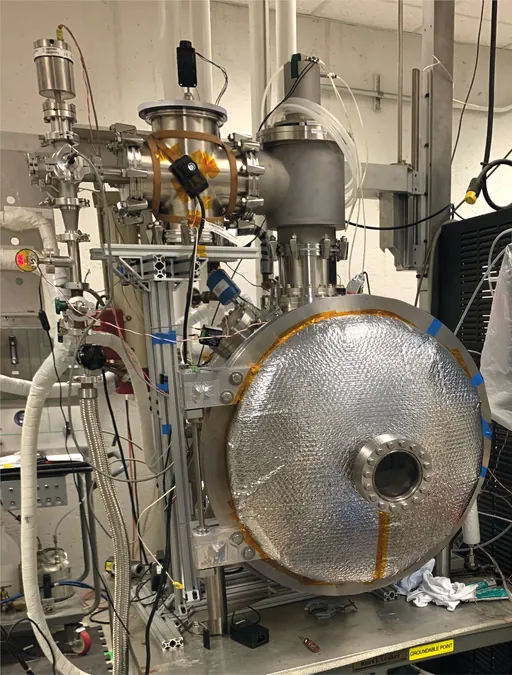
Revolutionary Breakthrough: Twisted Light May Transform Robotic Vision!
2024-12-23
Author: Michael
Revolutionary Breakthrough: Twisted Light May Transform Robotic Vision!
Researchers at the University of Michigan have made a groundbreaking discovery that allows for the production of bright, twisted light using a technology reminiscent of Thomas Edison's original light bulb. This remarkable finding not only delves into the intricacies of fundamental physics but also opens exciting new applications for robotic vision systems.
Jun Lu, the lead author of this innovative study published in this week’s edition of Science, pointed out the limitations of traditional methods: “Generating sufficient brightness when producing twisted light through conventional electron or photon luminescence has always been challenging.” However, their research revealed that a much older technique, akin to Edison's invention, can effectively generate thermal photons in a unique manner.
Every object emits photons—particles of light—based on its temperature, and when it reaches thermal equilibrium with its surroundings, it absorbs an equal number of photons. This phenomenon, known as 'blackbody radiation,' is best understood through Planck’s law, describing how a tungsten filament bulb, significantly warmer than its environment, radiates visible light that can be broken down into a spectrum of colors using a prism.
Interestingly, while most discussions about blackbody radiation focus on temperature and intensity, the shape of the emitting object can also be a game-changer. Typically, these objects are simplified to spheres for analysis, but by utilizing twisted shapes at the microscopic and nanoscale, researchers found that the polarization of emitted light could be influenced. In their study, they discovered that twisting the light source led to the emission of chiral or twisted light—a phenomenon that could revolutionize how sensors interpret the world.
Chiral light features clockwise and counterclockwise rotations that appear as mirror images, providing a new layer of detail in capturing and interpreting light frequencies. The Michigan researchers envision futuristic applications where self-driving cars and robotic systems will utilize these advancements to differentiate between closely related objects, such as a deer and a human. This differentiation relies on how different materials reflect light: for example, deer fur has unique properties that create distinct light patterns compared to fabric.
The implications of this research extend well beyond mere enhancement in brightness—this new technique can potentially produce twisted light up to 100 times brighter than existing methods! The team is also aiming to explore potential advancements in the infrared spectrum, where traditionally there’s a lot of noise. Their hope is that the polarization properties of chiral light could enhance visibility and clarity, a crucial factor for autonomous technologies.
With smart machines and autonomous vehicles on the horizon, this research could fundamentally change how we develop and integrate robotic vision into everyday life. Expect to hear more about this revolutionary twist on light as the University of Michigan's team continues its pioneering work at the COMPASS Lab, setting the stage for the next generation of autonomous systems.
Stay tuned as we uncover more exciting developments in the field of twisted light and its incredible potential!









 Brasil (PT)
Brasil (PT)
 Canada (EN)
Canada (EN)
 Chile (ES)
Chile (ES)
 España (ES)
España (ES)
 France (FR)
France (FR)
 Hong Kong (EN)
Hong Kong (EN)
 Italia (IT)
Italia (IT)
 日本 (JA)
日本 (JA)
 Magyarország (HU)
Magyarország (HU)
 Norge (NO)
Norge (NO)
 Polska (PL)
Polska (PL)
 Schweiz (DE)
Schweiz (DE)
 Singapore (EN)
Singapore (EN)
 Sverige (SV)
Sverige (SV)
 Suomi (FI)
Suomi (FI)
 Türkiye (TR)
Türkiye (TR)